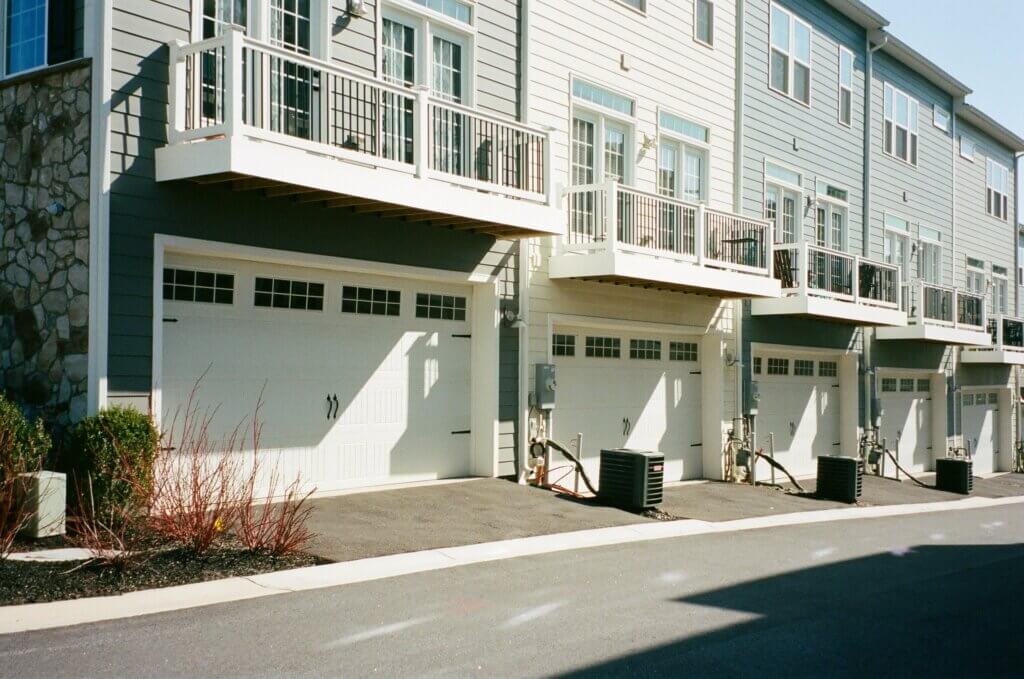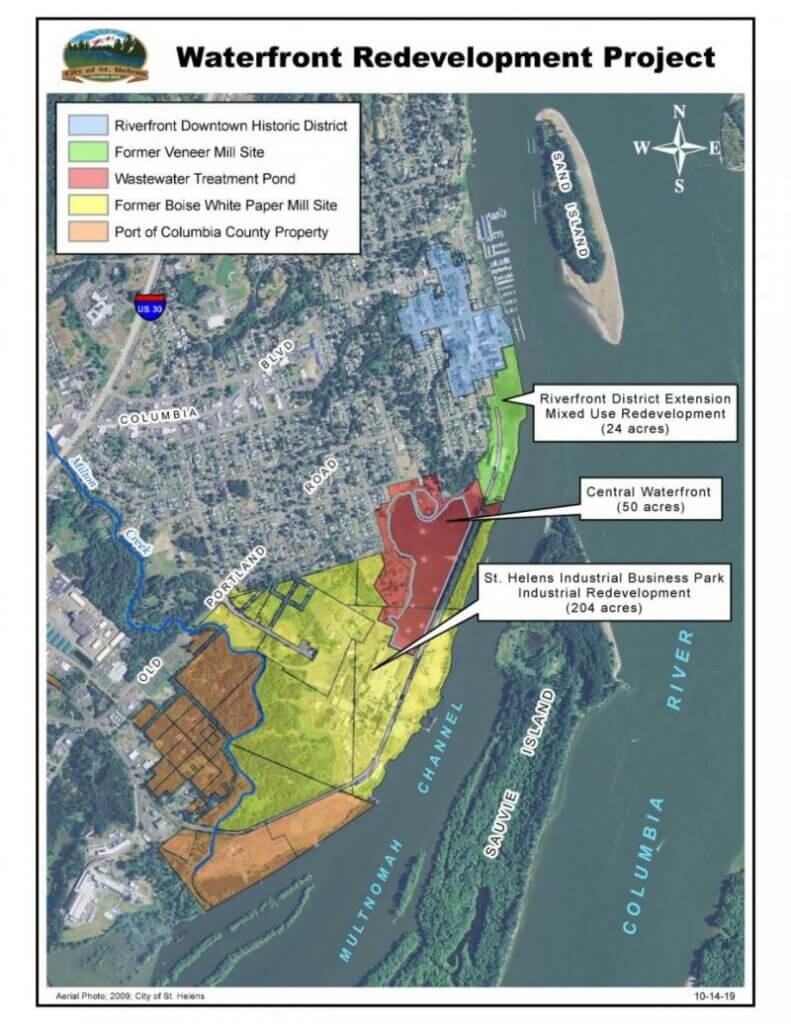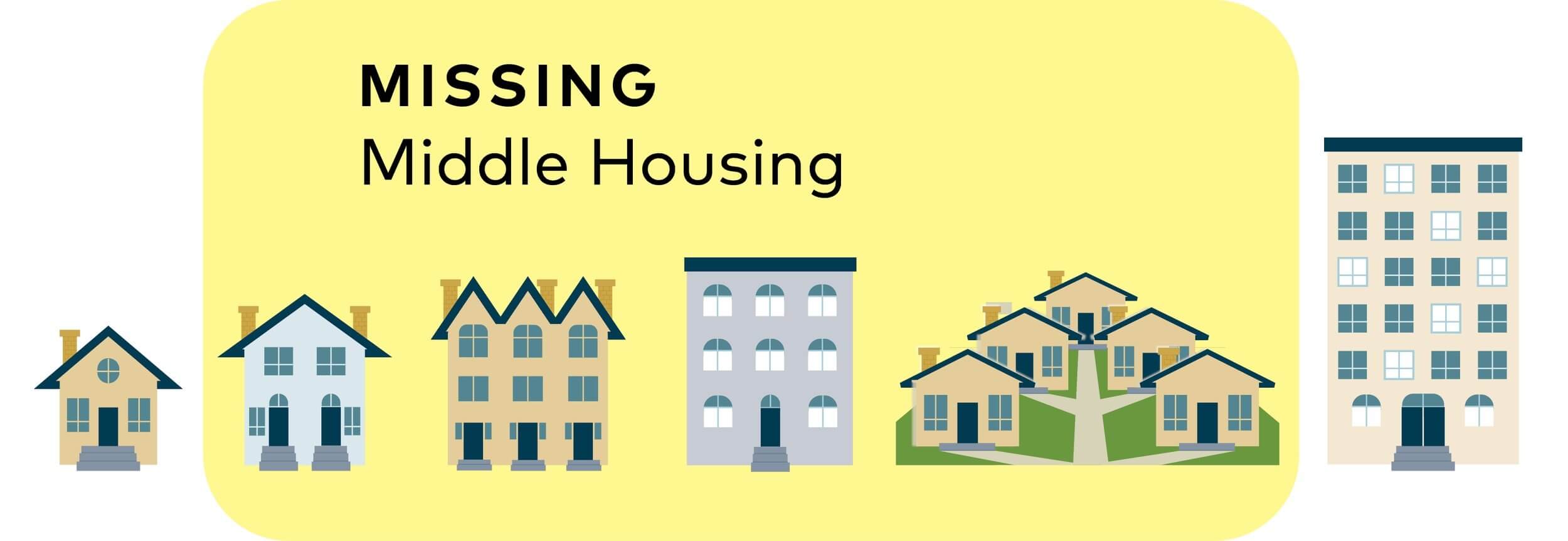Communities across the country are seeing housing prices escalate beyond the means of many households and are looking for ways to help turn the tide. Lately, many are looking to middle housing to provide a greater range of housing options in existing neighborhoods, allow for lower-cost homeownership opportunities, and help meet the housing needs of a growing community.
Middle Housing describes a range of neighborhood-scale housing options (e.g., triplexes, townhouses, cottage clusters) that offer alternatives to a single-family home, and are closer in size to a typical home than a typical apartment building. This can look like remodeling single-family homes into duplexes, building cottage clusters on large lots in existing neighborhoods, or including a mix of different types of housing in a new subdivision. While middle housing can look different in different places, many regions across the country are trying to figure out how, where, and when to incorporate more middle housing into their communities.
“Across the country, jurisdictions are asking whether, where, and how middle housing can help meet their local housing goals.”
In Oregon, many communities are working to enable middle housing in single-family-zoned residential areas following the passage of Oregon House Bill 2001 (HB 2001). In California, communities are looking to middle housing to meet their housing needs and help to lower housing costs, as well as implementing duplex and infill options following California Senate Bill 9 (SB 9). In Nebraska, medium and larger cities are exploring how middle housing could help keep homeownership attainable and support neighborhood-scale rental housing options. Washington and other states are contemplating their own statewide legislation to expand housing options in single-family zones.
ECONorthwest has supported (or is supporting) numerous jurisdictions in assessing what to expect from middle housing in terms of pricing and development potential. We have studied many communities— across a range of market conditions, down to a parcel level—and we have tested the impact of various policies and regulatory strategies for middle housing in jurisdictions across the West Coast, and increasingly across the country. While every community’s conditions and goals are different, we have uncovered some broadly applicable lessons from our work to date.
What We’ve Learned About Middle Housing
- Allowing middle housing is necessary, but not sufficient. Existing standards—for either single-family homes or larger multifamily buildings—can be problematic, impractical, or impossible to apply on a small lot for neighborhood-scale development. Density, lot coverage, and parking stand out as key standards to address to make middle housing work. It’s also important to consider how middle housing will “compete” with other housing types that are allowed in the same zone: middle housing is unlikely to happen in a single-family zone if it isn’t at least as attractive financially as building a new single-family home. Aligning regulations to tip the scales towards middle housing can help balance out the strength of demand and high pricing for single-family detached housing in many housing markets
- Change will be incremental. While there’s a lot of interest in middle housing at the moment, current residents may have concerns about how their neighborhoods could change if middle housing is allowed, and there are many other factors that will tend to moderate the pace of change. These include the cost of acquiring and redeveloping property with an existing home; the small percentage of suitable properties that are available for development at any given time; and limitations in building code, financing, and availability of developers and contractors.
- Making middle housing affordable takes intention and support. New market-rate middle housing tends to be less expensive than new single-family homes, but it may still be out of reach for many households, especially in high-cost housing markets. Supporting lower-cost development requires looking at regulatory and financial tools to make building broadly-attainable units more financially attractive to private developers than building luxury units. In addition, jurisdictions can use regulatory and financial tools to support providers of regulated affordable housing in building at a middle housing scale. While larger multifamily developments are common for regulated affordable housing, middle housing can be a good fit for certain affordable housing models, including affordable homeownership models like Habitat for Humanity and community land trusts.

Community Impacts
- Many communities are interested in the idea of middle housing, but they aren’t sure how to support or regulate it in their jurisdictions. Our work helps governments and organizations understand the market for middle housing, who it serves, how to make middle housing affordable, and how to understand development feasibility.
- ECONorthwest’s work is helping to close the gap between policy and action, identifying ways that communities can encourage and incentivize—rather than simply allow—middle housing.
Project Examples
- Middle Housing Model Code for Oregon—Statewide, OR (2020
- HB2001 Eugene Middle Housing Code Amendments—Eugene, OR (2021
- Missing Middle Housing Workgroup for the Association of Bay Area Governments—Bay Area, CA (2021)
- Housing Action Plan—Auburn, WA (2021)
- Pacific Grove Middle Housing Analysis—Pacific Grove, CA (2021)








